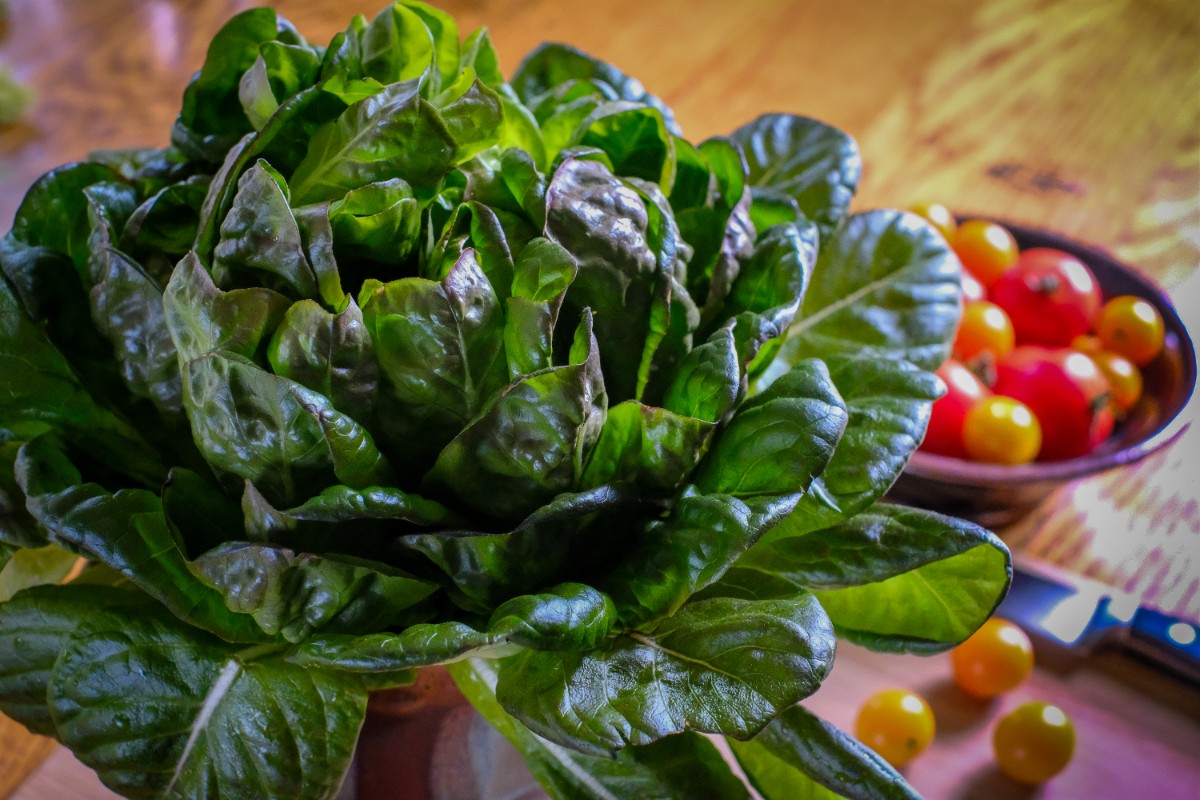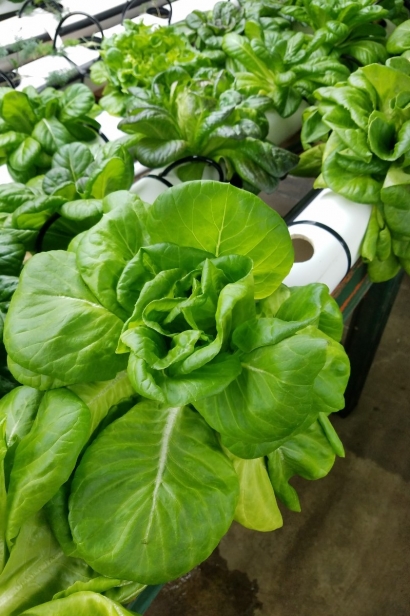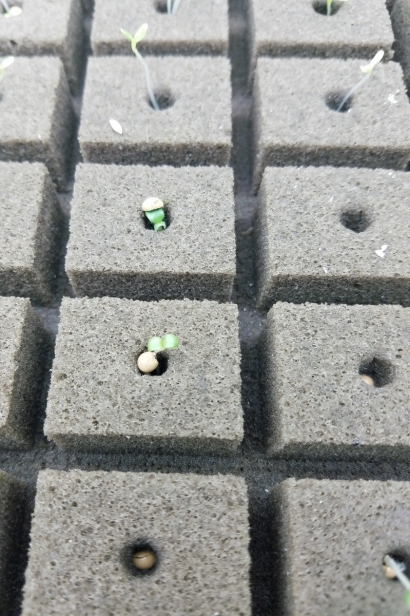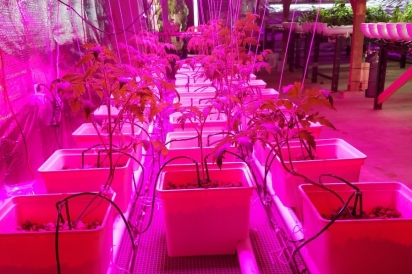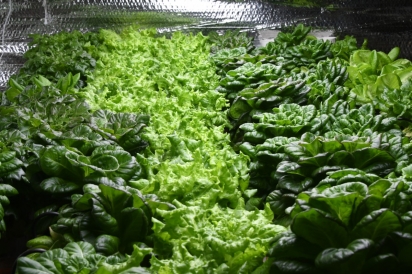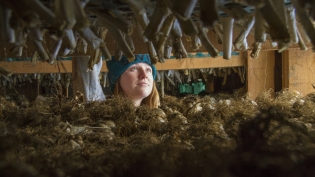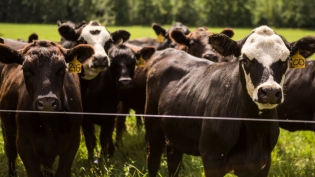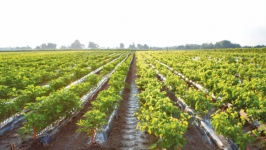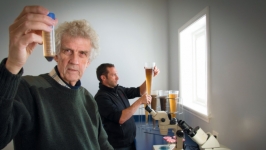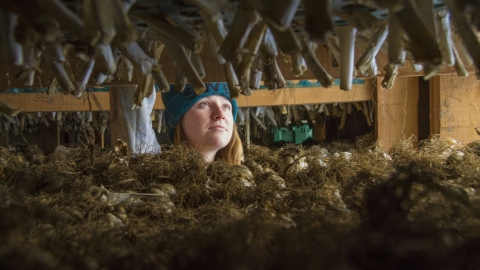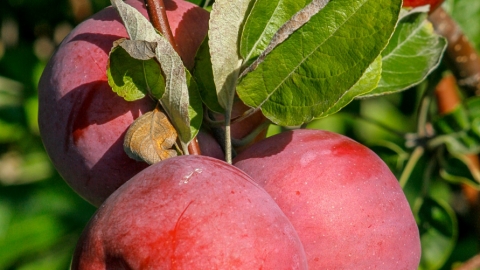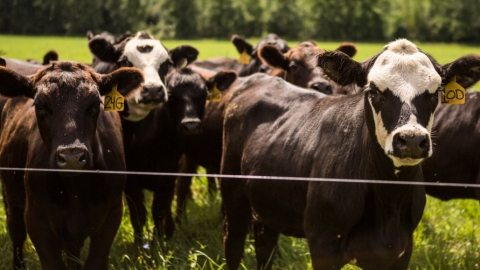Gardening the Great Indoors
Hydroponic growing delivers on the dream of fresh, local produce year-round.
Don’t you just love it when a soup recipe calls for a tablespoon of fresh herbs, and you have to buy far more than you need, for far more than they’re worth, shipped from far away? Or when a hearty grain salad requires grape tomatoes, and you drop top dollar on reddish mealy orbs more bland than the plastic encasing them? It’s the bane of the northern food lover—a passion for freshness tragically coupled with a climate for frozenness.
That is, unless you embrace indoor gardening. And thanks to the surging popularity of hydroponic growing, it’s easier than ever to do just that.
Hydroponics simply swaps out soil for liquid nutrient solutions. Plants may be supported by a variety of soil-less media—gravel, perlite or numerous others—or grown directly in water.
You may have observed eager roots forming when you place a cutting in a vase. Imagine adding the plant’s perfect nutrient needs, plus oxygen, and it’s easy to realize how promising hydroponics can be—especially for snowbound gardeners.
In North East, PA, Kim Daugherty opened Northern Lights Hydroponics on August 4, 2017. She’d lived for a few years in Anchorage, Alaska, where outdoor growing is out of the question for many herbs and key salad ingredients.
Lettuce and tomatoes provided Daugherty’s entry into growing her own food inside, but she’s certainly evolved. In a three- by six-foot tablestyle system by the store’s front window, she’s growing onions, Brussels sprouts, jalapeños and kale in a medium of organic peat, perlite, coconut husks and soft woods—all under a small full-spectrum light. She waters the medium about once per week; otherwise, it’s pretty hands-off. Nevertheless, it produces.
“I had so much kale I didn’t know what to do with it,” she says. “So, I gave it to my neighbor for his chickens, and he gave me eggs.”
Daugherty says that hydroponically, plants grow about 30–50 percent faster, using 90 percent less water—and the process is considered 70 percent less labor-intensive than traditional growing.
Along one mirrored wall in the store, she’s also growing eggplant, watermelon, pie pumpkins, yellow squash and the largest basil plant I’ve seen north of the Mason-Dixon Line—all clustered under a 1,000-watt high-pressure sodium light. The plants thrive in five-gallon containers, vining together in verdant glee. It’s a scene most gardeners would give their green thumb for come January.
Daugherty recently grew sweet corn and cherry tomatoes in a grow tent about the size of a walk-in closet. The corn grew so tall that she had to move it to another part of the store with more headroom.
But hydroponic growing needn’t be so grand. Northern Lights sells everything from smaller, self-contained, countertop herb-growing kits to all you need to build your own. There’s even a self-cleaning hydroponic fish tank—just add one Betta fish.
And whatever your level, Daugherty insists hydroponic gardening is “not that complicated.” She should know—she’s completely self- taught, though you’d never guess it by how readily she answers every question I fire her way.
“Many people think it’s too scientific,” she says. “But a lot of the hard stuff’s already been figured out.”
The first thing to consider is your light, Daugherty explains. “Start from your light, and work your way down.”
She says it’s important to know specific pH and nutrient needs of what you’re growing, but hydroponics allow for greater precision. And if you grow flowering crops, you even get to channel your inner bee and pollinate by hand.
Daugherty tells me repeatedly how happy she is to help people get started. “I want to get the word out there as much as I can,” she says. Her enthusiasm is contagious—and it’s a quality she shares with another hydroponic grower, Amanda Hines of No Dirt Farms in Fairview, PA. In fact, Northern Lights has recently become a supplier for No Dirt Farms—which should only help hydroponics grow locally.
By trade, Hines is owner of a hair salon. But with so much bad news in the world of food production, she says, starting a hydroponics business felt like “a great thing to do for our family, and for the community.”
So about three years ago, Hines, her dad and her husband started teaching themselves hydroponics. None of them has a horticultural background; there’s nary a biology degree in sight. But that wasn’t about to stop them.
Though they only began growing in earnest in the spring of 2018, No Dirt Farms’ produce is already available at Erie’s Whole Foods Coop and the Edinboro Market—or by delivery in western Erie County, PA. The Schoolhouse Tavern in Fairview even uses No Dirt’s herbs to concoct their creative cocktails.
“I want to provide produce that’s as fresh as it can possibly be,” Hines says. “I want people to know where their food’s coming from, know that it’s not tainted—that it doesn’t have pesticides or GMOs—so that people can feel confident in what they’re eating.”
When you buy a head of hydroponic lettuce still bearing its roots and sitting in a bit of water, you’re about to savor something bursting with life. I grow lettuce in my garden—but it never looks quite as vibrant as what I’ve bought from No Dirt Farms. Indoors, there’s nothing to deplete or stress the plants, and they’ve been nurtured by the exact nutrients and environment they need.
No Dirt Farms grows lettuce, dill, mint, basil and—starting this fall—tomatoes. Kale and spinach are also new to the mix.
Hines says she’s ready to scale up, and aiming high. She has big dreams—including opening a produce market with in-house hydroponics where folks could pick their lettuce up right out of the water.
Perhaps there’s something about hydroponic growing that inspires this sort of visionary thinking.
At L’Arche Erie, Director of Development Sandie Wheeler tells me about Sprouting Change. This initiative will ideally evolve into a hydroponic facility that will provide L’Arche’s core members, who are people with intellectual disabilities, with meaningful work. “This is an opportunity to provide members with interaction, connections and self-esteem—things most people get from their regular jobs,” Wheeler explains.
Residents at L'Arche's seven homes grew tomatoes, peppers and lettuce hydroponically outdoors last summer in recycled plastic containers. A large garage behind the L'Arche offices will be a wonderful indoor facility, but renovations are on hold until funding is secured. Wheeler imagines one day being able to supply the homes year-round with fresh produce grown by members, for members.
She’d also love to get members who’ve worked in the hydroponic facility into classrooms, into markets—into the community we’ve learned to think of as “normal.” She can imagine hydroponics as a vehicle to break down barriers, challenge stereotypes. Wheeler envisions a L’Arche member delivering veggies to a market in downtown Erie, and having the reaction be, “Here she comes, with her produce” instead of “Here she comes, with her disability.”
At Northern Lights, I tell Daugherty about my conversation with Wheeler, and her hopes for hydroponics at L’Arche. “Have her give me a call,” Daugherty responds unhesitatingly. Hines likewise offers to share what she’s learned.
Maybe it’s no coincidence that hydroponics is quite literally growing something out of water. Talk to any of these women even briefly, and you get the sense that they’ve tapped into “flow”—that wondrous state when the limiting inner voice grows quiet and creativity gets to flourish.
But these aren’t just daydreaming idealists. Sure, some who hype hydroponic gardening may get starry-eyed about its possibilities. But at the end of the day, they just want us all to be better fed. And that’s quite possibly the most practical venture of all.


